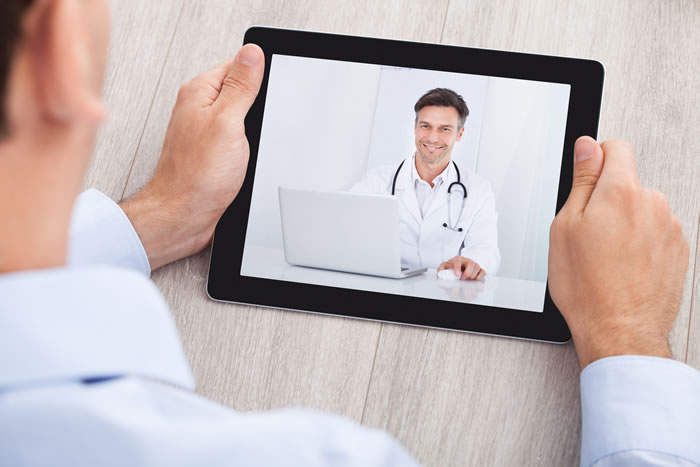In recent years, we have been hearing more and more about the infinite possibilities offered by tele-medicine, which, thanks to the development of telecommunications, is revolutionizing the world of patient care and assistance, even from a distance.
We can all appreciate its enormous potential, such as the possibility of having all our vital signs monitored remotely, and dramatically reducing diagnostic and medical intervention times. It will even resolve the logistical problems associated with getting patients out of their homes to reach the various clinics.
So is tele-rehabilitation also possible?
In the field of rehabilitation, there have always been certain difficulties introducing innovations like these, and this is because we've always thought that rehabilitation requires physical contact with a professional, who performs certain manoeuvres with the patient's body.
But things have been changing in recent years, above all in the field of stroke rehabilitation. In fact, a stroke damages the brain and the cognitive functions associated with it, but does not directly damage the muscles or joints. For this reason, the talent and professional skills do lie in the hands of the physiotherapist, but rather in his/her ability to come up with exercises that represent effective experiences for the patient. In turn, the patient will gradually learn to better perceive their body, and to organize both their attention and all the cognitive processes that have been altered by the injury in a more suitable manner.
This does not necessarily require any particular manual skills or complex manoeuvres involving physical contact with the professional. If guided properly by a specialized professional, even from a distance, a patient's family member can do an excellent job at home. Just like the field of Medicine is undergoing a technological revolution, the field of Rehabilitation has also been able to take its own leap towards tele-rehabilitation thanks to the involvement of family members.
And without the crucial support of the family members, we would never have been able to do it. This capability also allows us to meet many other needs of families who are dealing with the difficulties of having a post-stroke patient in the house: in fact, family members often feel powerless, and have a strong desire to participate in their loved one's care.
Furthermore, the 60 or 90 days of assistance offered by the national healthcare system are entirely insufficient for rehabilitating patients who have recently suffered a stroke. In fact, once these three months have elapsed, the patient is forced to return home, and must continue their rehabilitation privately; these rehabilitation activities need to be performed daily and continuously for numerous months, if not years, and it is unthinkable that they would have to bear these expenses on their own.
Our tele-rehabilitation project addresses all of these requirements, thus allowing family members to do an excellent job with their loved one, without having to incur the professional fees and daily commuting expenses,
while at the same time offering high quality rehabilitation, because the patient is constantly under the remote care of a specialist.
How does tele-rehabilitation work?
We have always believed in the possibility of family members being able to manage the rehabilitation process from home. In fact, bolstered by the results obtained with hundreds of patients, we have created a series of video guides. These specific guides consist of videos with practical explanations designed to teach the basic neurocognitive rehabilitation exercises. The video guides divided into two categories for the treatment of left and right hemiplegia.
Those who have purchased the video guides will have exclusive access to a Facebook group created specifically to provide support. Within this group, family members can post their own short videos showing how they perform the exercises at home in order to obtain valuable suggestions or corrections, with the aim of perfecting the exercises themselves.
The Facebook support group has proven to be an extremely powerful tool, because the suggestions given to one family can also be used by all the others. Furthermore, when the specialists need to entrust them with new exercises, they can always find a video posted by another family that has already handled the same exercise before. In addition to the video guides and the Facebook support group, it is also possible to obtain assistance directly from the specialist through online visits conducted via web-cam, during which we are able to determine and design the exercises most suitable for each case based on the patient's specific problems.
We have created a comprehensive support program for families in order to offer them the best possible support for home rehabilitation purposes, which consists of 2 online meetings per month and other benefits.
Find our more about the Video Guides for home rehabilitation.


